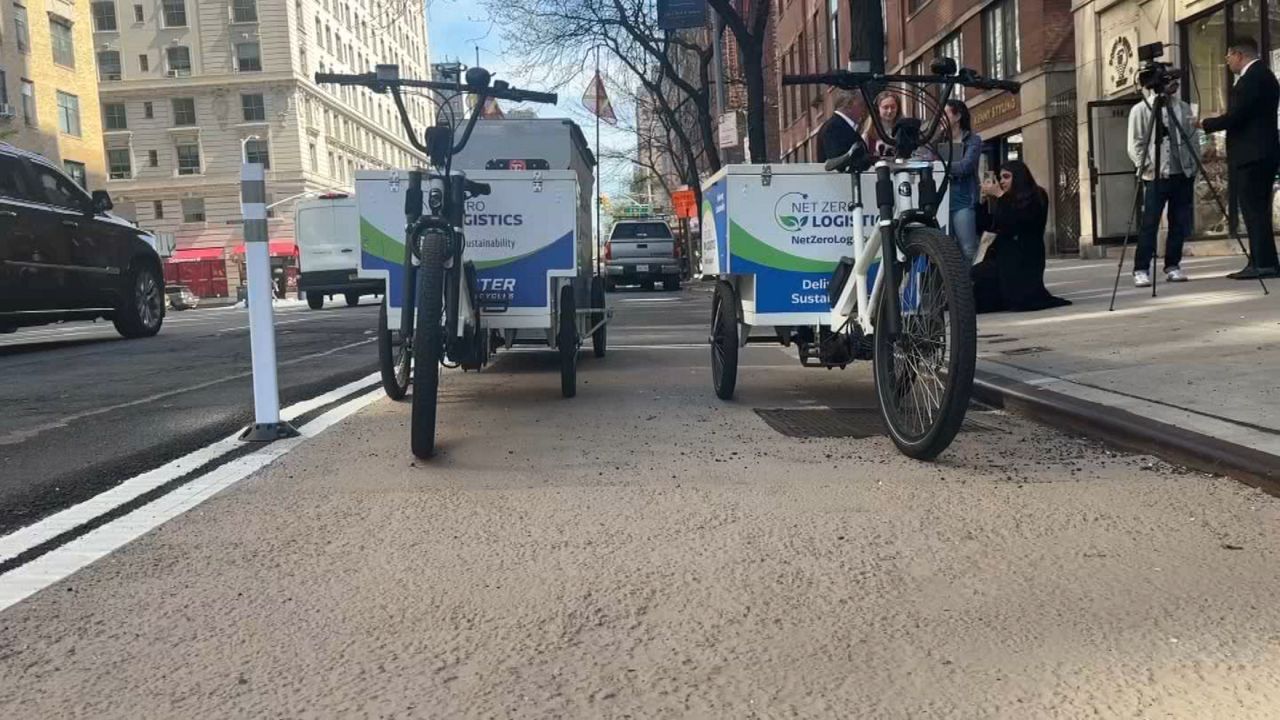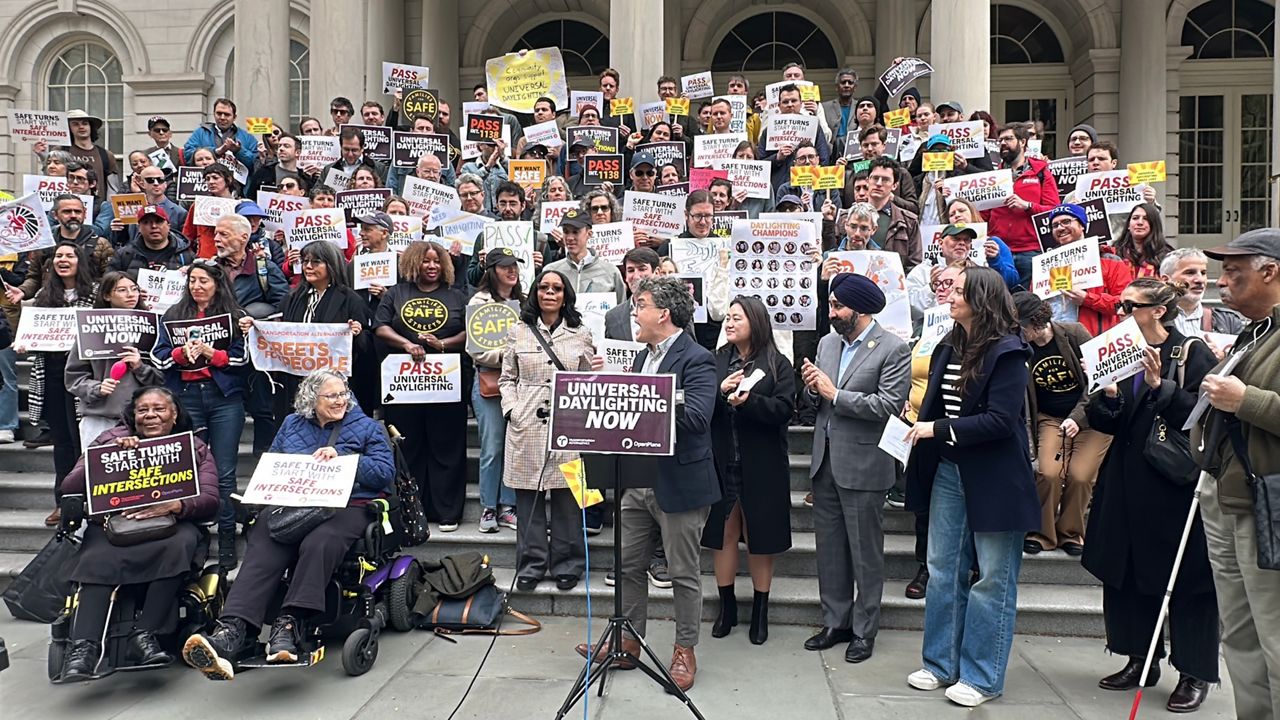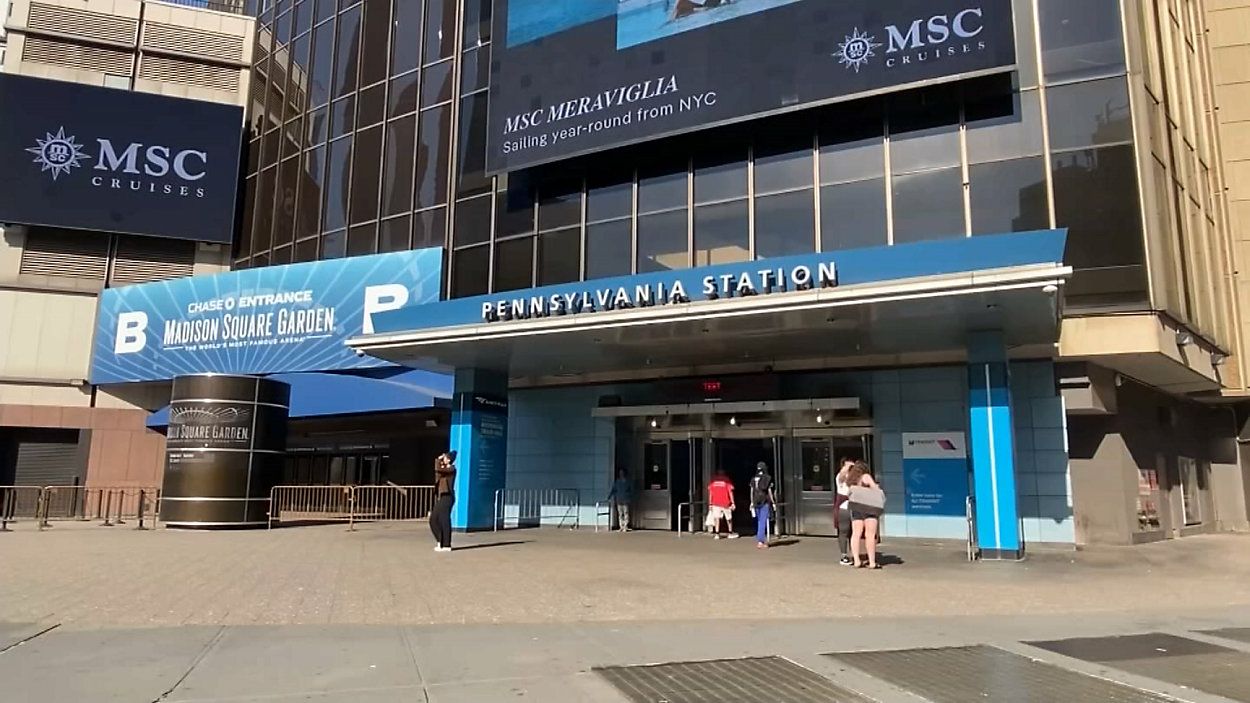The Williamsburg Bridge on the Manhattan side is a chaotic convergence of cars, bicycles, scooters and pedestrians. Movement,governed only by plastic bollards, paint on asphalt and craggy sidewalks.
“Biking over any of the East River crossings is always gonna be difficult, because you have pedestrians, bicyclists, and now you have scooters, mopeds using the same area,” Max Crespo said after riding a Citi Bike over the Williamsburg Bridge. “We’re probably a little crazy riding our bike here.”
The constant run-ins and near misses are leading the city's Department of Transportation to redesign the area.
“By clarifying the routes, you’re able to make things more predictable, which boosts safety for everybody in this space,” said Shawn Macias, deputy director of the bicycle program at the DOT.
The agency has secured $41 million to redesign a half-mile stretch of Delancey Street from the bridge to the Bowery, with $18 million of that funding coming from a federal grant under a new program called "Safe Streets For All." That will let the DOT expand sidewalks and give drivers less space to drive outside of their lanes.
“By building out these aspects of the intersection, these motorists will have less autonomy to do as they wish in this space,” Macias said. And cyclists will get more space to avoid a dangerous bottleneck at the foot of the bridge.
It’s a frustrating set up for pedestrians, too.
“At one time, it used to be road rage, cars. Now it’s human rage. Bikes, you have to be like a watchtower,” Tito Garcia, of Brooklyn, said following a jog over the Williamsburg Bridge.
The redesign will also transform a slab of asphalt and traffic markings in the median into a plaza.
“In the future, we’ll be able to really add, everything in concrete, build out some plantings, build out some walls between the roadway and the motorists and also some plantings between the cyclists and the pedestrians, again, just to separate some of those modes,” Macias said.
All this is aimed at preventing collisions, injuries and deaths.
“This funding coming at the federal level will allow [us] to transform what we have in front of us, to bring the level of safety that we need,” DOT Commissioner Ydanis Rodriguez said.
According to the DOT, the stretch of Delancey Street right off the Williamsburg Bridge is the most dangerous part of the corridor — 38 people were seriously injured or killed between 2016 and 2020.
A DOT spokesperson said there’s no plan to close lanes on the Williamsburg Bridge, though there will be a lane closure on Delancey Street. The DOT expects to break ground next year.






_ES_Congestion_Pricing_Flaws_Presser_CLEAN_132774690_1428)
